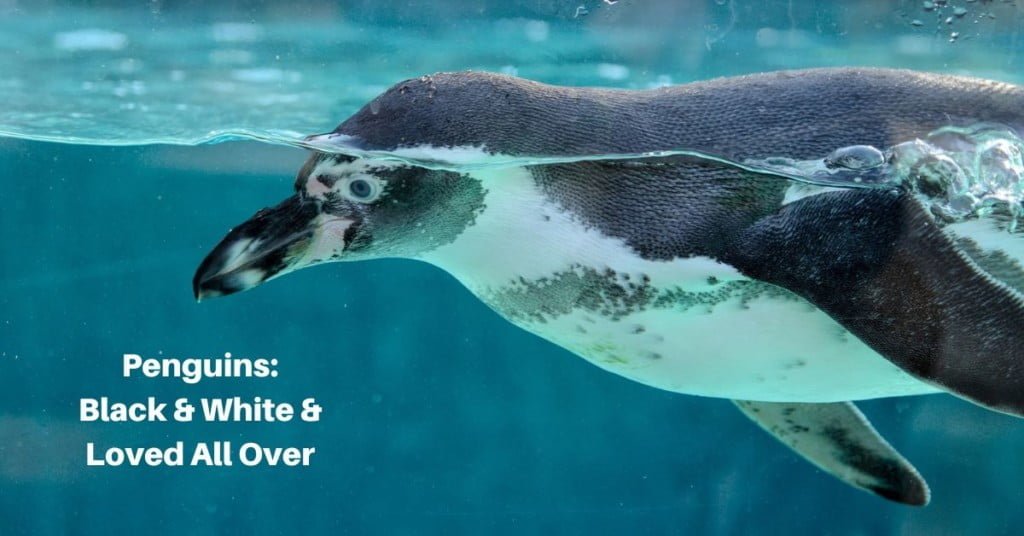Penguins, with their striking black and white plumage and engaging behaviors, are among the most intriguing birds in the animal kingdom. Native to the Southern Hemisphere, they are specially adapted to life in and around the ocean. Each penguin species has unique characteristics, but all share common features that enable them to thrive in aquatic environments.
Species Diversity and Habitats
The penguin family, Spheniscidae, includes various species, each adapted to specific habitats. The largest, the Emperor Penguin (Aptenodytes forsteri), is primarily found in Antarctica, while the smallest, the Little Blue Penguin (Eudyptula minor), lives along the coasts of Australia and New Zealand. Other notable species, like the African Penguin (Spheniscus demersus), inhabit the warmer shores of South Africa.
Physical Characteristics and Adaptations
Penguins vary in size, with the Little Blue Penguin standing around 40 cm (16 inches) tall and the Emperor Penguin reaching up to 122 cm (48 inches).
Despite being birds, penguins cannot fly. Their wings have evolved into flippers, making them adept swimmers but incapable of airborne flight. Their bodies are streamlined, facilitating efficient movement through water.
Aquatic Lifestyle: Swimming and Diving
Penguins spend a significant amount of their lives in water. They are exceptional swimmers, with some species capable of reaching speeds up to 36 km/h (22 mph). Penguins can also dive deep in search of food, with Emperor Penguins able to dive to over 500 meters (1,640 feet) and stay underwater for around 20 minutes. These diving capabilities vary among species but are crucial to their survival, allowing them to hunt fish, krill, and squid effectively.
Diet, Predation, and Lifespan
The penguin diet consists mainly of aquatic organisms. They face predation from marine predators like seals and sharks, and terrestrial predators threaten their eggs and chicks. The average lifespan of penguins varies by species, with some, like the Emperor Penguin, living up to 20 years.
Breeding Behaviors and Social Life
Penguin breeding practices are diverse, with Emperor Penguins famously incubating their single egg on their feet during the Antarctic winter. Most species are monogamous, and both parents share responsibilities in raising the young. Penguins are social animals living in large colonies where communication through vocal and visual signals is essential.
Conservation and Ecological Importance
With several penguin species facing environmental challenges, conservation efforts are vital. Protecting their habitats and mitigating human impacts are crucial to preserving these unique creatures.
Cultural Significance
Penguins are celebrated in many cultures for their playful nature and distinctive appearance. They often symbolize adaptability, community, and the ability to thrive in challenging conditions. This symbolic representation has made them popular figures in literature, film, and other media.
They frequently appear in children’s books and stories, often portrayed as friendly and intelligent characters. They are also featured in various cultural folktales and myths, particularly among indigenous communities in the Southern Hemisphere.
Penguins are popular as mascots and branding symbols due to their universal appeal. From sports teams to companies, the penguin image evokes attributes like resilience, teamwork, and approachability.
Penguins in Pop Culture
There are many examples of penguins featured on TV and film – whether in documentaries or as anthropomorphized characters. Here are just a few you may remember:
Chilly Willy: This animated character, introduced by Walter Lantz in 1953, is a small, adorable penguin known for his adventures and mischievous antics, capturing the hearts of audiences and becoming a classic in animation history.
Happy Feet: This 2006 animated film, directed by George Miller, features a colony of dancing and singing penguins, with the main character, Mumble, standing out due to his unique tap-dancing skills. The film was acclaimed for its animation, music, and environmental message.
March of the Penguins: This 2005 documentary, narrated by Morgan Freeman, follows the yearly journey of Emperor Penguins in Antarctica. It received widespread acclaim for its storytelling and cinematography, bringing the life and challenges of these penguins to a global audience.
Penguins captivate us with their unique adaptations and behaviors. Unable to fly, they have mastered life in the water, spending much of their time swimming and diving. Their speed and endurance underwater are remarkable, reflecting their evolution as proficient aquatic hunters. As symbols of the marine environment, penguins play a crucial role in educating us about the importance of oceanic conservation and the diverse life forms that depend on these ecosystems.



